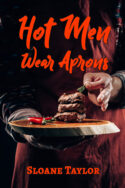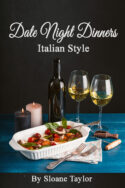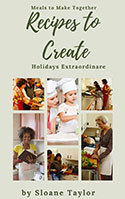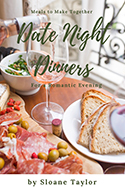HERE COMES THE BRIDAL CAKE
June 21, 2023 | Uncategorized
by Catherine Castle
Today I’m talking about wedding cakes and my book A Groom for Mama. Keep reading to the end for an excerpt from my award-winning romantic comedy with a touch of drama, A Groom for Mama. And thanks for stopping by.
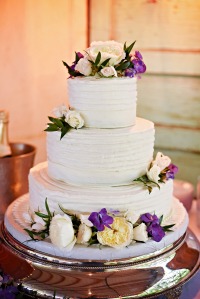
If there’s one thing we know about wedding cakes today, it’s that they come in a wide variety of style, flavors and sizes. If you look on the internet you can find wedding cakes ranging from simple two or three layers to towering monstrosities or multi-flavored cakes connected with plastic bridges and even individual cupcakes. But nowhere have I seen a wedding cake that resembles the one the groom broke over his bride’s head in Roman times. In ancient history, and even up to Victorian times, the wedding cake bore little resemblance to the sweet confections of today.
In ancient Rome, the bridal cake was a simple, unsweetened barley loaf. The groom would eat part of the loaf and break the remainder over the bride’s head. This was a symbolic act thought to bring prosperity and good fortune to the couple. Wedding guests would try to eat the crumbs from the cake so they could also share in the good fortune showered down on the bride’s head.
In medieval England, the bridal cake was composed of buns or small cakes. Stories remain from accounts telling of stacking the cakes as high as they would go. If the bride and groom were able to kiss over the tall stack it was thought they would have a life of prosperity.
By the 1660s the story is told of a French chef who was traveling through England and saw the stacked pile of cakes at a wedding. After returning home he devised a method of constructing rounded cakes or buns into a tower form called a Croquembouch. This tiered pile of cakes became the traditional French wedding cake. Today it’s common to place a Croquembouch on top of a more modern layer cake.
From the mid-1700s a Bride’s Pie was introduced at wedding meals. The pie, which was a meat pie, not a sweetened concoction, was filled with sweetbread, mincemeat, or mutton. Bride’s cakes, which were more like fruitcake than the typical white batter cakes we associate with today’s weddings, might also be eaten.
Groom’s cakes appeared in the 1880s and were typically darker-colored fruitcakes that were much smaller than the bride’s cake. Bride’s cakes, in Colonial times, were very rich creations, often reserved for the wealthy who could afford the ingredients. Because they were so labor intensive to make, the cakes were made weeks ahead of the wedding and soaked in alcohol to preserve them for the wedding date.
In the 1800s bride fruitcakes were still the norm. Below is a typical recipe for a wedding cake from an 1833 recipe book, courtesy of http://www.foodtimeline.org/foodcakes.html#weddingcake
Wedding Cake [1833]
Good common wedding cake may be made thus: Four pounds of flour, three pounds of butter, three pounds of sugar, four pounds of currants, two pounds of raisins, twenty-four eggs, half a pint of brandy, or lemon-brandy, one ounce of mace, and three nutmegs. A little molasses makes it dark colored, which is desirable. Half a pound of citron improves it; but it is not necessary. To be baked two hours and a half, or three hours. After the oven is cleared, it is well to shut the door for eight or ten minutes, to let the violence of the heat subside, before cake or bread is put in. To make icing for your wedding cake, beat the whites of eggs to an entire froth, and to each egg add five teaspoonfuls of sifted loaf sugar, gradually; beat it a great while. Put it on when your cake is hot, or cold, as is most convenient. It will dry in a warm room, as short distance from a gentle fire, or in a warm oven.”
—The American Frugal Housewife, Mrs. Child, Boston [1833] (p. 72)
In 1840, Queen Victoria introduced the white-icing tiered cake that we know today as a “wedding cake.” The cake was iced in ‘royal icing’, which had been invented specifically for the royal wedding cake. Although the cake looked different on the outside, the batter was still the traditional fruitcake of the bride’s cake. The first tiered cakes, including Queen Victoria’s cake, had layers that were not edible. It wasn’t until 1882 when the first tiered cake with all-edible layers appeared at the wedding of Prince Leopold, Duke of Albany. Even today, our English friends choose the traditional fruitcake batter for their wedding cakes. Prince William and Kate’s wedding cake was made with a fruitcake batter, as was his mother’s and his grandmother’s.
Wedding toppers appeared in the 1940s, and by the 1950s, American brides began moving away from the traditional fruitcake of Colonial America. Today, you’ll find wedding cakes in many styles, themes, and flavors. If you can dream it, there will be someone who can make it.
When I was writing the book I hadn’t thought much about what kind of cake my characters would have, but I think it would look a lot like the one on my book cover. And Mama would have been sitting on a layer just as she is in the cover. After all, she was Cupid’s helper.
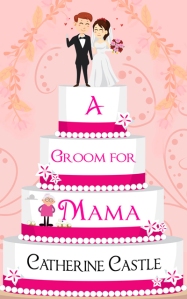 Beverly Walters is dying, and before she goes she has one wish—to find a groom for her daughter. To get the deed done, Mama enlists the dating service of Jack Somerset, Allison’s former boyfriend.
Beverly Walters is dying, and before she goes she has one wish—to find a groom for her daughter. To get the deed done, Mama enlists the dating service of Jack Somerset, Allison’s former boyfriend.
The last thing corporate-climbing Allison wants is a husband. Furious with Mama’s meddling, and a bit more interested in Jack than she wants to admit, Allison agrees to the scheme as long as Mama promises to search for a cure for her terminal illness.
A cross-country trip from Nevada to Ohio ensues, with a string of disastrous dates along the way, as the trio hunts for treatment and A Groom For Mama.
EXCERPT
Bounding down the stairwell as the bell rang, Allison shouted, “I’m coming! I’m coming. Keep your pants on!” She threw the deadbolt off and jerked open the door.
Jack Somerset stood in front of her, his chin perched on top of a stack of Chinese take-out cartons. Shoving down her tingling gut reaction, she commanded her heart to stop jumping like an overexcited puppy.
Except for a few more laugh wrinkles around his eyes, Jack hadn’t changed a bit since college. His brown hair still dipped over his forehead in a shaggy mane. A lopsided smile spread across his face when he saw her. He winked at her, his green eyes twinkling.
“Well, if it isn’t the bride-to-be. Nice to see you again, Allison.” He jiggled the cartons balanced in his arms. “I brought Chinese. I remember it was your favorite. Moo shu pork, right?” He pushed past her and headed toward the kitchen, apparently as well acquainted with her childhood home as she.
Grabbing her head between her hands, she squeezed her temples.
Chinese. Of all the things he could have brought, he brought Chinese.
She’d broken it off with him in a Chinese restaurant . . . over moo shu pork. Very loudly and very violently. The pork and the pot of hot tea had landed in Jack’s lap when he tried to keep her from leaving the table. Did his choice of entrees mean Jack hadn’t forgotten the incident? She hadn’t, and she’d been unable to eat that particular Chinese dish since.
Buy link: A Groom for Mama, on Amazon and Barnes and Noble
 Multi-award winning author Catherine Castle loves writing. Before beginning her career as a romance writer she worked part-time as a freelance writer. She has over 600 articles and photographs to her credit, under her real name, in the Christian and secular market. She also lays claim to over 300 internet articles written on a variety of subjects and several hundred poems. In addition to writing she loves reading, traveling, singing, theatre, quilting and gardening. She’s a passionate gardener whose garden won a “Best Hillside Garden” award from the local gardening club. She writes sweet and inspirational romances. You can find her award-winning Soul Mate books The Nun and the Narc and A Groom for Mama, on Amazon and Barnes and Noble.
Multi-award winning author Catherine Castle loves writing. Before beginning her career as a romance writer she worked part-time as a freelance writer. She has over 600 articles and photographs to her credit, under her real name, in the Christian and secular market. She also lays claim to over 300 internet articles written on a variety of subjects and several hundred poems. In addition to writing she loves reading, traveling, singing, theatre, quilting and gardening. She’s a passionate gardener whose garden won a “Best Hillside Garden” award from the local gardening club. She writes sweet and inspirational romances. You can find her award-winning Soul Mate books The Nun and the Narc and A Groom for Mama, on Amazon and Barnes and Noble.
Follow her on Twitter @AuthorCCastle, FB or her blog.



